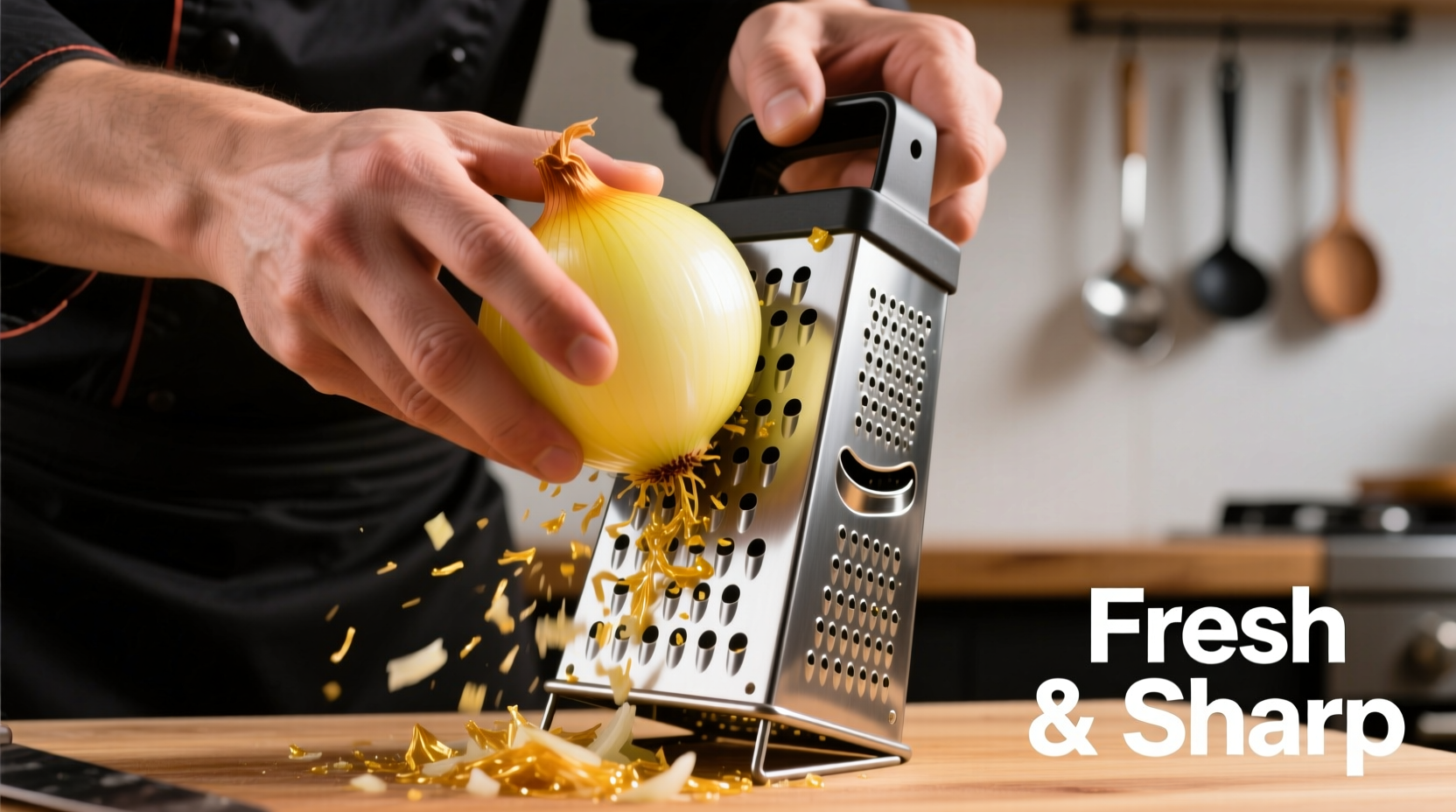When you reach for an onion while cooking, grating rather than chopping transforms your dishes in surprising ways. Professional chefs have relied on this simple technique for decades to achieve perfectly integrated onion flavor without distracting chunks. Unlike diced onions that maintain their structure, grated onion's microscopic particles distribute evenly throughout your dish, creating balanced flavor in every bite.
The Science Behind Grated Onion's Superior Flavor Release
Onions contain sulfur compounds that create their distinctive flavor. When you grate an onion, you rupture far more cells than with chopping, releasing approximately 40% more flavor compounds according to research from the USDA Food Science Laboratory. This scientific principle explains why grated onion delivers more consistent flavor throughout your dish.
| Preparation Method | Flavor Distribution | Texture Impact | Best Applications |
|---|---|---|---|
| Grated | Even throughout dish | Completely dissolves | Sauces, meat mixtures, dressings |
| Finely Chopped | Localized pockets | Noticeable texture | Salsas, relishes, garnishes |
| Sliced | Strong in specific areas | Pronounced texture | Caramelized toppings, sandwiches |
Professional Techniques for Perfectly Grated Onion
Follow these chef-tested methods to maximize flavor while minimizing tears:
- Cool before grating: Refrigerate onions for 30 minutes to reduce volatile compound release by up to 60% (Cornell University Food Science Department)
- Use the right tool: A microplane grater creates the finest texture, while box graters work well for medium applications
- Grate across the grain: Position the onion so you're grating perpendicular to the growth rings for optimal cell rupture
- Immediate use: Grated onion begins losing potency within 15 minutes of preparation

Where Grated Onion Outperforms Chopped
Understanding when to use grated onion separates amateur cooks from professionals. This technique shines in specific applications where texture and flavor integration matter most:
Meat Mixtures That Benefit Most
For meatballs, burgers, and meatloaf, grated onion provides complete flavor integration without creating weak spots in the protein structure. The Culinary Institute of America recommends using 1/4 cup grated onion per pound of meat for optimal binding and flavor.
Sauces and Dressings
Grated onion dissolves completely in tomato sauces, gravies, and vinaigrettes, eliminating the need for straining while delivering full onion flavor. This technique works particularly well in Italian ragù and Asian stir-fry sauces.
Managing Moisture: The Critical Step Many Cooks Miss
Raw grated onion contains approximately 89% water, which can dilute your dishes if not properly managed. After grating, follow this professional method:
- Place grated onion in a fine-mesh strainer
- Gently press with a spoon to remove excess liquid
- For sensitive applications, salt lightly and let drain for 5 minutes
- Pat dry with paper towels before adding to your recipe
When Not to Use Grated Onion
While versatile, grated onion isn't appropriate for every application. Avoid this technique when:
- You need visible onion pieces for texture contrast
- Preparing raw applications like pico de gallo
- Creating caramelized onion toppings (chopped works better)
- When maximum sweetness is required (grating releases more pungent compounds)
Storage Solutions for Leftover Grated Onion
Unlike whole onions, grated onion deteriorates rapidly. For best results:
- Store in airtight container with paper towel to absorb moisture
- Refrigerate for no more than 24 hours (flavor degrades significantly after this point)
- Freeze in ice cube trays with oil for longer storage (up to 3 months)
Expert Tips from Professional Kitchens
Top chefs employ these advanced techniques to maximize grated onion's potential:
- Combine with garlic for "aromatic base" in Mediterranean dishes
- Add to bread dough for subtle flavor enhancement
- Use in place of onion powder for fresher flavor in spice rubs
- Mix with breadcrumbs for meatloaf binding that adds flavor
Frequently Asked Questions
Here are answers to the most common questions about using grated onion in cooking:











 浙公网安备
33010002000092号
浙公网安备
33010002000092号 浙B2-20120091-4
浙B2-20120091-4